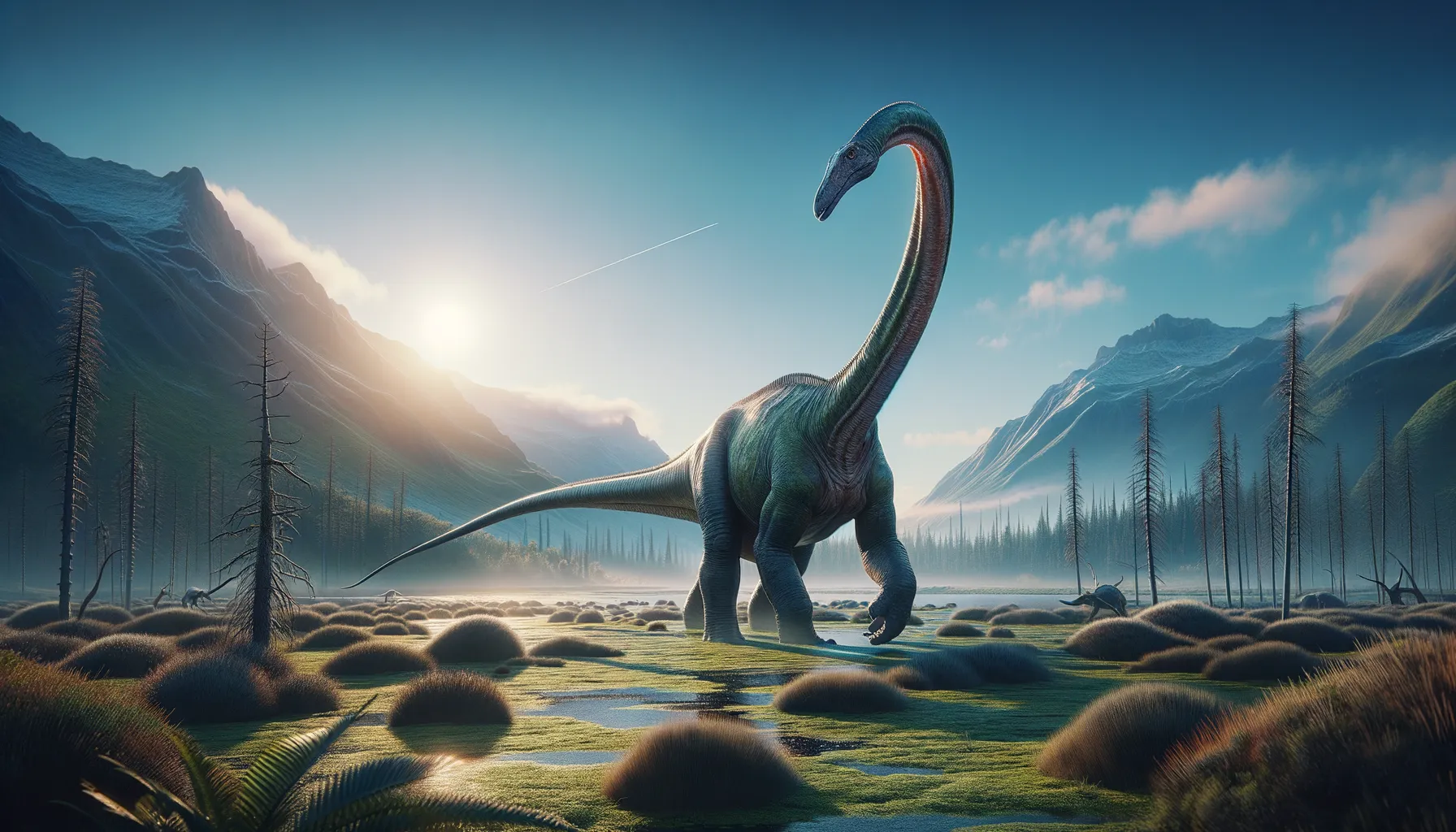
Aepisaurus
The gentle giant of ancient France!
Period
Cretaceous
Length
Could reach a length of up to 15-20 meters.
Height
Stood roughly 6 to 8 feet tall at the hip.
Weight
Estimated to weigh several tons.
Aepisaurus is a lesser-known sauropod dinosaur from the Late Cretaceous period. It was a long-necked herbivore that roamed ancient landscapes now found in France. While not as massive as its relatives like Brachiosaurus or Diplodocus, Aepisaurus had a similar body structure with a long neck and tail. Fossils of this dinosaur are sparse, so much of its life remains a mystery, but it contributes to the understanding of Europe's dinosaur fauna.
Diet
Aepisaurus primarily fed on plants, using its long neck to reach high vegetation. Its diet consisted of leafy greens and possibly shrubs or small trees, a common feeding strategy among sauropods.
Hunting
As a herbivore, Aepisaurus did not hunt, instead foraging for plant material. It likely used its substantial size to deter predators rather than hunting for food.
Environmental challenges
During the Late Cretaceous, Aepisaurus faced a variety of environmental challenges, including fluctuating climates and the gradual fragmentation of its habitat due to tectonic shifts. Predators like theropods posed threats, and Aepisaurus relied on its size for protection. Competition for resources with other herbivores would have notably influenced its survival strategies.
Speed
Aepisaurus was relatively slow.
Lifespan
Could live for several decades.
First discovery
Discovered in France in 1841.
Fun Facts
- Aepisaurus was a dinosaur that lived during the Late Cretaceous period, around 100 million years ago.
- The name Aepisaurus means 'high lizard', highlighting its towering height.
- Aepisaurus was a sauropod, which means it had a long neck and tail, and walked on four legs.
- Fossils of Aepisaurus were first discovered in France, making it one of the few sauropods known from Europe.
- Like many sauropods, Aepisaurus was a herbivore, meaning it primarily ate plants.
- Aepisaurus might have used its long neck to reach vegetation high up in the trees, similar to how modern giraffes feed.
- Despite its massive size, Aepisaurus had a relatively small head compared to the rest of its body.
Growth and Development
Aepisaurus, like other sauropods, experienced rapid growth initially. Their growth patterns suggested a need to reach a size that minimized the threat from predators quickly. As they matured, growth slowed, and caloric demands evened out, likely influencing their feeding and social behavior.
Habitat
Aepisaurus inhabited diverse environments, from floodplains to forested areas. Their fossil remains suggest a preference for locations with abundant vegetation. These environments not only provided food but also helped conceal these large creatures from potential danger.
Interaction with other species
Aepisaurus interacted with various species while coexisting with other herbivorous and possibly carnivorous dinosaurs. Its large size might have allowed it to dominate shared resources, but competition was inevitable. Symbiotic relationships with smaller animals may have existed, perhaps using them as a means of protection from parasites.
Natural lifespan
The natural lifespan of Aepisaurus potentially reached up to 70 years.
Reproduction
Like many dinosaurs, Aepisaurus likely laid eggs. Clutch sizes might have varied, with nests possibly being communal or solitary, depending on the social behavior of this species. Parental care levels remain unknown but are generally assumed to be minimal among sauropods.
Social behaviour
Aepisaurus may have traveled in groups, akin to other sauropods, as a defense mechanism against predators. Social behavior could have facilitated feeding and kept younger members of the herd safer from threats. Communication within the group would have been vital for coordination and survival.
Fossil locations
Fossil remains of Aepisaurus have been primarily found in France. These findings provided initial insights but remain relatively rare, prompting ongoing interest in uncovering more about this species. Limited fossils make it challenging to reconstruct its broader geographical distribution accurately.
